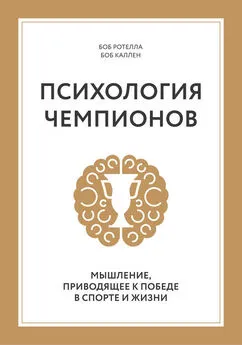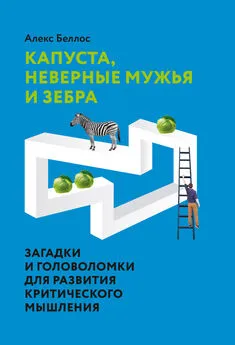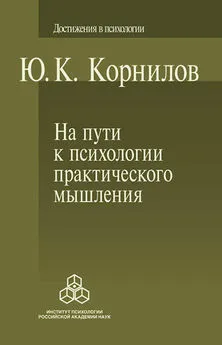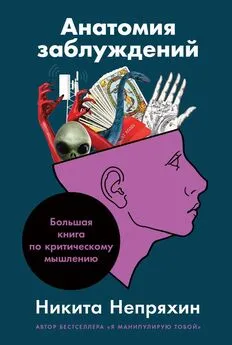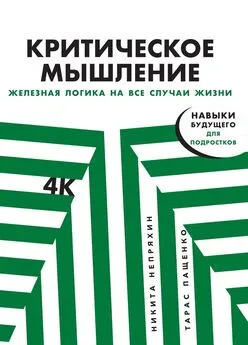Дайана Халперн - Психология критического мышления
- Название:Психология критического мышления
- Автор:
- Жанр:
- Издательство:Издательство Питер
- Год:2000
- Город:Санкт-Петербург
- ISBN:ISBN 5-314-00122-5
- Рейтинг:
- Избранное:Добавить в избранное
-
Отзывы:
-
Ваша оценка:
Дайана Халперн - Психология критического мышления краткое содержание
Эта книга написана в помощь тем, кто хочет научиться думать современно. Опираясь на новейшие достижения когнитивной психологии и свой уникальный педагогический опыт, Дайана Халперн разработала эффективную программу обучения навыкам «критического мышления». Данная книга может быть широко использована в преподавательской и методической работе, окажет неоценимую помощь в самообразовании, а кроме того, является своеобразным путеводителем по современной когнитивной психологии. Рекомендуется психологам, педагогам, философам, а также всем интересующимся когнитивной психологией, психологией творчества, теорией принятия решений.
Психология критического мышления - читать онлайн бесплатно полную версию (весь текст целиком)
Интервал:
Закладка:
Tversky A., Kahneman D. (1983). Extensional versus intuitive reasoning: The conjunction fallacy in probability judgment. Psychological Review, 90, 293–315.
Vancouver Community Business Directory. (1987). Pink Pages. Advertising, Ltd.
Van Haneghan J., Barron L., YoungM., Williams S., Vye N… Bransford J. (1992). The Jasper series: An experiment with new ways to enhance mathematical thinking. In D. F. Halpern (Ed.), Enhancing thinking skills in the sciences and mathematics (pp. 15–38). Hillsdale, NJ: Lawrence Erlbaum Associates.
VanLehnK. (1989). Problem solving and cognitive skill acquisition. In M. Posner (Ed.), The foundations of cognitive science (pp. 527–580). Cambridge, MA: MIT Press.
Vaughan J. L. (1984). Concept structuring: The technique and empirical evidence. In С D. Holley D. F. Dansereau (Eds.), Spatial learning strategies: Techniques, applications, and related issues (pp. 127–147). New York: Academic Press.
Vernon P. (1970). Creativity: Selected readings. Har-mondsworth, England: Penguin.
von Oech, R. (1983). A whack on the side of the head. New York: Warner Books.
VosniadouS., OrotonyA. (Eds.). (1989). Similarity and analogical reasoning. Cambridge, England: Cambridge University Press.
Walberg F. (1980). Puzzle thinking. Philadelphia: Franklin Institute Press.
Wales С. Е., NardiA. (1984). Successful Decision-Making Morgantown, WV: Center for Guided Design.
Wallas G. (1926). The art of thought. New York: Har-court Brace.
Walsh J. (1981). A plenipotentiary for human intelligence. Science, 214, 640–641.
Wandersman A. H., Mailman W. K. (1993). Are people acting irrationally? Understanding public concerns about environmental threats. American Psychologist, 48, 681–686.
Wang P. (1994, October). How to retire with twice as much money. Money, pp. 77–84.
Wanous J. P. (1973). Effects of a realistic job preview on job acceptance, job attitudes, and job survival. Journal of Applied Psychology, 58, 327–332. '
Wason Р.СЛ1 960). On the failure to eliminate hypotheses in a conceptual task. Quarterly Journal of Experimental Psychology, 12, 129–140,
Wason P. С (1968). On the failure to eliminate hypotheses: A second look. In P. C. Wason P. N.
Johnson-Laird (Eds.), Thinking and reasoning. Baltimore: Penguin.
Wason P. C. (1969). Structure simplicity and psychological complexity. Bulletin of the British Psychological Society, 22, 281–284.
Wason F. C, Johnson-Laird P. N. (Eds.). (1968). Thinking and reasoning. Harmondsworth, England: Penguin.
Wason R. C, Johnson-Laird P. N. (1972). Psychology of reasoning. Cambridge, MA: Harvard University Press.
Weber R. J., Perkins D. N. (Eds.). (1992). Inventive minds: Creativity in technology. New York: Oxford University Press.
Weisberg R. W. (1988). Problem solving and creativity. In R. J. Sternberg (Ed,), The nature of creativity: Contemporary psychological perspectives (pp. 148–177). New York. Cambridge University Press.
Weisberg R. W. (1993). Creativity: Beyond the myth of genius. New York: Freeman.
Weisberg R., DiCamillo M., Phillips D. (1978). Transferring old associations to new situations: A nonau-tomatic process, Journal of Verbal Learning and Verbal Behavior, 17, 219–228.
WertheimerM. (1959). Productive thinking (2nd Ed.). New York: Harper.
Wheeler D. D., Janis I. L. (1980). A practical guide for making decisions. New York: The Free Press.
Wheeler D. L. (1994, March 16). Chronicle of Higher Education, pp. A41-A43.
Whimbey A. (1976). Intelligence can be taught. New York Bantam.
WhimbeyA., LochheadJ. (1982). Problem solving and comprehension: A short course in analytic reasoning. Philadelphia: Franklin Institute Press.
Whitehead A. N., Russell B. (1927). Principa mathematics (2nd. ed.). New York: Cambridge University Press.
Whiting С S. (1958). Creative thinking. New York: Reinhold.
WhorfB. (1956). Language, thought, and reality. Cambridge, MA: MIT Press.
Wickelgren W. (1974). How to solve problems. San Francisco: Freeman.
Wicker A . W. (1981). Getting out of our conceptual ruts: Strategies for generating new perspectives on familiar research problems. Paper presented at the 1981 annual convention of the Western Psychological Association, Los Angeles.
Wilson T. D., Crouch E. A. C. (1987). Risk assessment and comparisons: An introduction. Science, 286, 267–270.
Wilson T. D., Nisbett R. E. (1978). The accuracy of verbal reports about the effects of stimuli on evaluations and behavior. Social Psychology, 41, 118–131.
Wright G., Bolger F. (1992). Expertise and decision support. New York: Plenum.
Nates J. F. (1990) Judgment and decision making. Englewood Cliffs, NJ: Prentice-Hall.
Zimbardo P. G., Leippe M. R. (1991). The psychology of attitude change and social influence. New York: McGraw-Hill.
Примечания
1
Halpern D. Enhancing Thinking Skills in the Science and Mathematics. Preface. 1992.
2
Вертгеймер М. Продуктивное мышление. — М.: Прогресс, 1987. — С. 108–109.
3
Зинченко В. П. Аффект и интеллект в образовании. — М.: Тривола, 1995. — С. 21–23.
4
Чалдини Р. Психология влияния. — СПб.: Изд-во "Питер", 1999, 2000
Интервал:
Закладка:
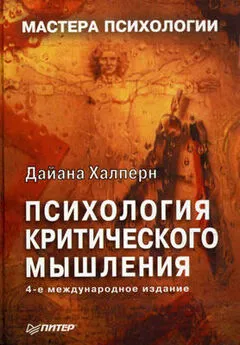
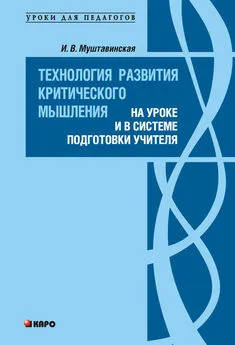

![Дэниел Левитин - Путеводитель по лжи [Критическое мышление в эпоху постправды]](/books/1101191/deniel-levitin-putevoditel-po-lzhi-kriticheskoe-my.webp)
